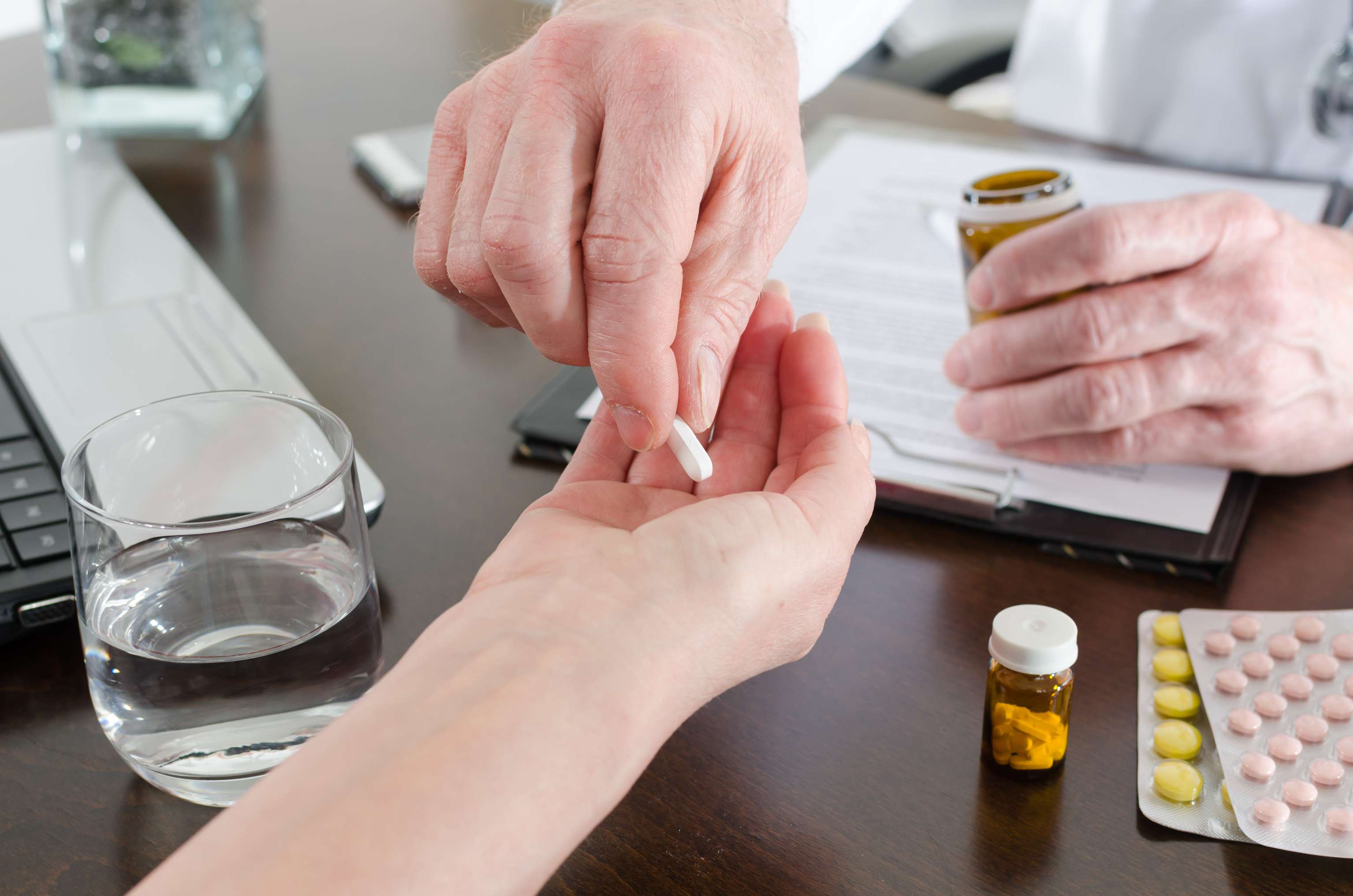Does Atogepant help prevent migraines?

Migraine
Migraine is a chronic condition that completely incapacitates sufferers. The recurring headache attacks are paired with other ailments such as dizziness, nausea, vomiting, sensitivity to light and sound. The moderate to severe pain increases with physical exertion. About 15% of migraine patients suffer from migraine with aura. In this case, neurological symptoms, mostly visual, occur, resulting in a spreading flickering scotoma in the field of vision. The aura usually occurs before the attack and can last 15 to 60 minutes.
The disease process and causes of migraine are not yet completely understood. Hereditary factors, hormonal balance and certain triggers such as panic, stress or weather conditions can be causative factors. The course of the attacks is divided into episodic and chronic courses. In a chronic course, the patient has headache attacks on more than 15 days per month and for more than three months. The headache attacks must also meet IHS classification criteria to be considered migraine. Often, chronic migraine is paired with depression or an anxiety disorder. However, these can also be facilitated by acute headache medication, so it should not be taken more frequently than 10 days per month. In typical migraine with unremarkable clinical findings, no further diagnosis is necessary.
Headache attacks are usually treated in primary care, so it is important that both treatment and prevention take place there. The therapy intends to reduce the frequency, duration and severity of migraine attacks. Medication is given with oral medication and with injections. For injections, CGPR-targeted monoclonal antibodies have been specifically developed. These have been shown to be effective and tolerable, but patients usually prefer oral therapy. For acute treatment, analgesics, antiemetics, and triptans are used for very severe migraine attacks. Beta-blockers, flunarizine, topiramate, and CGRP antibodies are prescribed as prophylaxis. However, due to lack of efficacy and/or intolerance, approximately 75% of patients discontinue such treatment. In addition to drug treatments, non-drug therapies are also used. These include regular endurance exercise, regular relaxation techniques, and a regular daily routine and lifestyle.
Atogepant
This oral agent has only recently been approved for use in the United States. Dosages vary and are determined by the treating physician. Atogepant has been studied in a Phase 2b/ 3 study and in a Phase 3 study (ADVANCE) in the context of migraine. Participants in the studies took the drug once daily, which significantly contributed to the reduction of average monthly migraine attacks. Atogepant was shown to be well tolerated with no safety concerns. The percentage of participants reporting treatment-related side effects was similar across groups, and the most commonly reported side effects were constipation and nausea, compared to 0.5% for constipation and 1.8% for nausea in the placebo group.

Study Methods
The secondary analysis published in JAMA Network used data from the randomized, double-blind, placebo-controlled phase 3 ADVANCE trial, which was conducted from December 14, 2018, to June 19, 2020. The impetus for the secondary analysis arose from the conclusion of recent reviews and opinions that the treatment of migraine should focus on primary care. Migraine patients need preventive treatment that is effective, well tolerated, and migraine-specific. The objective was to evaluate the response rates of migraine patients to Atogepant. Outcomes were measured by average monthly migraine days and how they changed in number.
Ninety-two adults suffering from 4 to 14 migraine attacks per month participated. These were divided into the following groups: three groups taking 10, 30 or 60 mg of Atogepant daily and one group taking a placebo daily. Subjects received the daily dose in a 1:1:1 ratio over a 12-week period. In each dosing group, the drug reduced average monthly migraine days.
Response rates to treatment were then analyzed and evaluated. Response rate is the reduction in the average monthly days participants have migraine attacks. This was divided into 25% or more change in average monthly headache days, 50% or more, 75% or more, and 100% reduction in monthly headache days.
Results
In the 10 mg group (n = 214), 73.4% of participants reduced average monthly migraine days by 25% or more. In 55.6% of participants, average days decreased by 50%. 30.4% of participants reported a 75% reduction, and 7.9% of participants reduced migraine days by 100%.
In the 30 mg group (n = 223), 77.1% of subjects reduced monthly migraine days by 25%. A 50% reduction in days occurred in 58.7% of participants. 29.6% of participants reported a 75% reduction, and 4.9% of subjects documented a 100% reduction in monthly migraine days.
In the 60 mg group (n = 222), 81.1% of participants reduced average monthly migraine days by 25% or more. In 50.8% of participants, average days reduced by 50%. 37.8% of subjects had a 75% reduction, and 7.7% of participants had a 100% reduction in migraine days.
In the placebo group (n = 214), 58.9% of subjects had a 25% reduction in monthly migraine days. 29.0% of participants reported a 50% reduction in days. 10.7% of participants reported a 75% reduction, and 0.9% of subjects decreased monthly migraine days by 100%.
Response to oral treatment was evident in the first four weeks and increased over time, suggesting an early and sustained response. These data provide evidence that a 12-week treatment period may be of adequate duration to establish response to the drug. Higher doses appeared to produce the highest response rates. This may guide physicians in individualizing the initial dose. Atogepant response rates were consistent with those of other migraine prevention treatments. Patient-reported outcomes showed that a significant proportion of participants reported feeling much better and were satisfied with treatment.
Responder rates were analyzed across a range of thresholds and time periods, which allowed for the detection of different levels of response to treatment at different time points. In addition, the follow-up period began as early as week 1, allowing assessment of the earliest onset of Atogepant efficacy. The risk for false-positive results should be considered low, as most observations showed statistically significant differences. The study also has some limitations, including the fact that only 50% of responder rates were prespecified outcomes controlled for α-error.
Conclusion
Atogepant proved to be an effective and tolerable migraine prophylactic agent at all doses studied after the first 4 weeks of treatment and differed significantly from placebo response rates. A higher dose was associated with more subjects experiencing a reduction in average monthly migraine days. These findings may facilitate in determining the starting dose in medical treatment. It remains to be seen when Atogepant will be approved in European countries.
Diseases included in the article
Sources
- Lipton RB, Pozo-Rosich P, Blumenfeld AM, et al. Rates of Response to Atogepant for Migraine Prophylaxis Among Adults: A Secondary Analysis of a Randomized Clinical Trial. JAMA Netw Open. 2022;5(6):e2215499. doi:10.1001/jamanetworkopen.2022.15499
- Deutsche Gesellschaft für Neurologie
- Deutsche Gesellschaft für Neurologie

Olivia Malvani, BSc
Last updated on 27.10.2022
Your personal medication assistant
Browse our extensive database of medications from A-Z, including effects, side effects, and dosage.
All active ingredients with their effects, applications, and side effects, as well as the medications they are contained in.
Symptoms, causes, and treatments for common diseases and injuries.
The presented content does not replace the original package insert of the medication, especially regarding the dosage and effects of individual products. We cannot assume liability for the accuracy of the data, as the data has been partially converted automatically. Always consult a doctor for diagnoses and other health-related questions.
© medikamio